At the start of the Second World War, the French Metropolitan Army was considered the best on the Continent. With over 2.2 million men deployed for the Battle of France in 94 divisions, backed by the imposing presence of the Maginot Line, and well-supplied with armour and artillery, it seemed certain that even in a worst-case scenario they would be more than capable of resisting a German invasion for years. Instead, the collapse of the French Army in 1940 stands as one of the most shocking defeats in military history and paved the way for the next five years of bloodshed.
While the traditional narrative presents the French Army as a hopelessly outmoded and clumsy force that presented no resistance to the German Blitzkrieg, in truth it was a modern and well-equipped professional military supported by vast numbers of conscripted reservists, capable of both decisive offensive and valiant defensive actions. It was, however, hampered significantly by poor communications and a leadership over-reliant on a defensive doctrine far more suited to the bloody fields of Verdun than the modern war they found themselves in, but this should not detract from the courage and valour of the men who stood against the onrushing Wehrmacht in defence of their country. “Pour la patrie” (for the homeland), as they’d say.
Fortunately (or unfortunately, for those of us who are a little more tactically challenged), on the Bolt Action tabletop you are the final authority of command, and you can normally see what’s going on at the ‘sharp end’ of a battle! An early-war French army is a fantastically rewarding challenge for new recruits and seasoned veterans alike and looks absolutely awesome when deployed and ready. It doesn’t hurt that it’s relatively simple to paint, either. Let’s take a look at the men and machines that make up a Bolt Action French force.
To avoid this article becoming a small book, I’m only focusing on the European theatre before and during the Fall of France.
The Rules
We’ll begin with the national special rules, of which there are three. Communication Breakdown represents the communication issues and organisational chaos of the Fall of France and makes it very likely that your opponent will get the very first Order Dice of the game. The Forward Artillery Doctrine gives you a free artillery piece, which is always useful. I’d always humbly suggest the iconic ‘French 75’ light howitzer, although you may wish to go for something bigger, or an anti-tank weapon. Finally, Hurriedly Conscripted Reserves lets you draw upon the massed manpower of Metropolitan France, granting you a free Inexperienced Infantry Section if you take three or more in your force – a bit like a supermarket deal, but with more angry Frenchmen.
The Infantry
As with all modern armies, the French have the normal complement of Officers, Medics, and Forward Observers – I particularly enjoy French forces that take an Artillery Observer along with two howitzers for maximum pin infliction! When it comes to the PBI (Poor Bloody Infantry), Armies of France & the Allies has an enormous variety to choose from, allowing you to tailor your force to your exact theme and requirements. There are of course the ubiquitous Regulars, and the aforementioned Inexperienced sections which are ideal for almost every situation, armed with rifles, LMGs, and the iconic VB rifle-grenade launcher which gives virtually every squad the ability to dish out some HE-shaped nastiness!
New Plastic French Infantry!
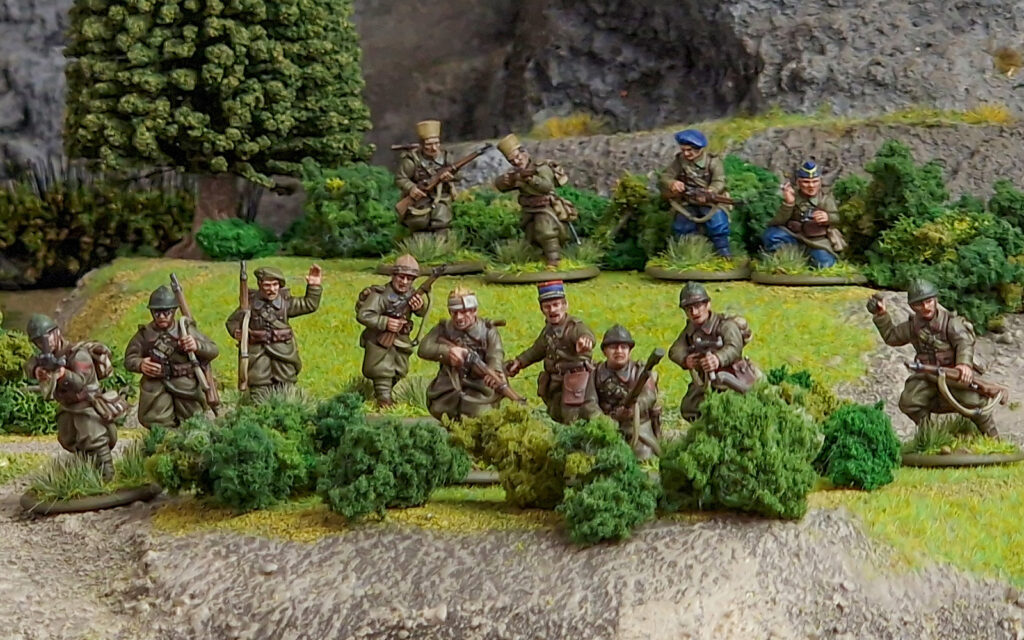
The long-awaited, much-requested, plastic French infantry is coming soon, and its arguably our most versatile sprue yet! For a full rundown of just what you can do with the new kit right out of the box, check out our announcement article here!
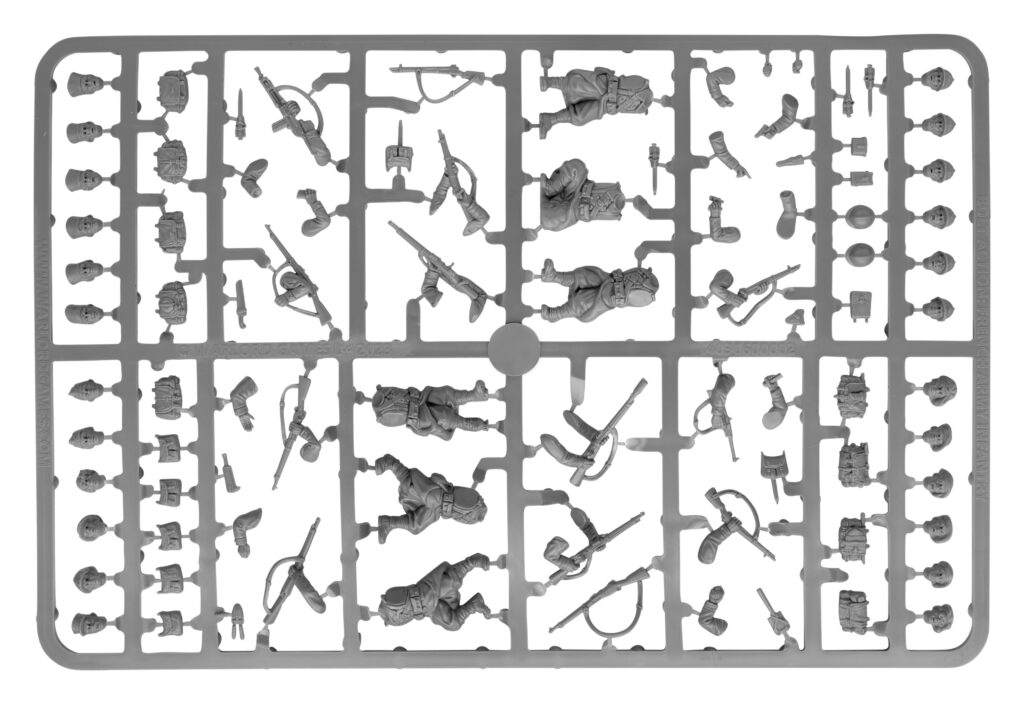
When it comes to veterans and other specialist infantry, the French army is absolutely jam-packed with flavourful options, so you can build an army that’s perfect for what you want – no need for cookie-cutter armies here! The motorised infantry of the Dragons et Chasseurs Portes, in contrast to the typical perception of the French army as plodding and defensive, bring the elan of their forebears to the tabletop, as well as armfuls of LMGs and anti-tank grenades! Stick a squad in a truck or half-track, and beat the Germans at their own game.
While not particularly well-known, the elite raiders of the Group Franc units, comprised of the Alpine Chasseurs and Groupes de l’Infanterie de l’Air (the trained but never-dropped French paratroop units) bring a much-needed heft to your force. These Veterans are bristling with LMGs and SMGs, capable of pumping out incredible amounts of firepower and taking a beating in return. If taken as Alpine Chasseurs, they can have skis for free – ideal for all those beautiful snow-themed tables out there!
The French army has long had a tradition of fielding troops recruited from outside Metropolitan France. The most famous (or infamous) of these formations was (and still is) the Legion Etrangere – the legendary French Foreign Legion. While best known for their exploits in French North Africa, the Legion fought hard in France as well. On the table, they give you Stubborn Veterans in large numbers, with all the usual weaponry you’d expect from an elite formation. Almost as famous as the Legion are the Senegalese Tirailleurs. Five units of these hardy African troops fought in France with honour and determination, despite often-awful treatment by their own command hierarchy. The German forces were known to fear their ferocious attacking mentality, reinforced by the enormous coupe-coupe machetes carried by each trooper. While in most respects a ‘normal’ Regular infantry section, the Tirailleurs also have the Tough Fighters rule to reflect both their attacking spirit and really big knives.
The modern battlefields of the Second World War may have been dominated by tanks and artillery, but that was never going to stop a nation with such a proud cavalry tradition from deploying horsemen! French Cavalry Sections can be taken either as Regular or Veteran, and in significant numbers. Thirteen men with their dual-purpose cavalry carbines can cause some serious trouble in an opponent’s backline, so why not take a unit or two and remind your enemies why Europe used to tremble at the thought of mounted Frenchmen! For those wishing to be a little more a la mode in their reconnaissance, the Motorbike Section gives you even more mobility, albeit at the cost of a little style in the eyes of the cavalry!
The Heavy Weapons
As befits any modern army, the French have access to the usual range of early-war support teams – personally, I’m a big fan of bringing a Boys Anti-Tank Rifle to deal with those pesky light tanks… or annoying officer teams! While not fielding a Heavy Mortar, the French army’s 81mm Brandt Medium Mortar is arguably the most successful design of the war, being copied by a vast number of other nations. As a good friend of mine once told me; “HE means Pins, Pins mean Wins” – I’d consider a mortar of either the light or medium variety an absolute essential in any Bolt Action force.
What French army would be complete without a Grand Battery? As mentioned before, the iconic ‘French 75′ is my go-to, but there’s also plenty of heavier firepower in the forms of medium and heavy howitzers in a bewildering variety of calibres – perfect for getting weird and wonderful with your modelling choices. Tanks too must beware – while the 25mm Puteaux and Hotchkiss guns are perhaps a touch underpowered for 1940, the 47mm Mle 1937 is rightly feared as one of the best anti-tank guns of the early war. Remember, with the Forward Artillery Doctrine rule, one light or medium gun is free, so you can menace both Panzers and infantry with an ease denied to other armies! While anti-aircraft artillery (AA) was never the strong suit of the French army, the 25mm Hotchkiss autocannon can do decent service, especially if you add a second barrel to the mount.
The Armour
French armour has historically been much-maligned, and it must be said that in some cases their designs were rather outdated, but that’s not to say that there aren’t any gems to be found. With so many options, we won’t cover all of them in this article, but instead focus on those that I consider to be solid choices for any French tanker. Special mention must go first, however, to the venerable Renault FT. A relic of the First World War, and arguably the first ‘modern’ tank, the FT was amazingly still in service by the Fall of France. Armed only with an MMG, and frequently slower than a briskly-marching infantryman, they really had no hope against the German advance, yet stood their ground with admirable sangfroid. On the table, they’re a surprisingly efficient way to get another machine gun into your force, at a paltry 35 points for Regular!
A common feature in French tank designs was the one-man turret, whereby the commander had to perform the role of gunner and loader in addition to his own duties. This rather understandably caused some difficulties and confusion, and in Bolt Action means a tank with the rule must always take an order check when Advancing, even if it has no pins. The Renault ‘R’ series are numerous and affordable, if rather slow, and surprisingly well-armoured for a light tank with the Armoured All Round special rule, while the tiny two-man Hotchkiss ‘H’ series brings a little bit more speed to the table. Both suffer from low-velocity main guns, but both can upgrade these to ‘normal’ Light Anti-Tank Guns. Similarly, the Somua S35 brings some survivability with its uprated frontal armour.

For my money, however, the cream of French armour is the unique-looking Char B1. This imposing beast brings thick armour for a Medium tank and is more than capable of standing up to the Panzer IIs that it historically stood against – just make sure to keep it away from any 88s! For armoured cars, the AMD Panhard 178 should be the go-to for the Battle of France, and provides decent armour, firepower, and mobility for a very reasonable cost. It also has the ever-useful Recce special rule to enhance its survivability.
Finally we come to the transports. Well-supplied with vehicles, numerous 2-ton trucks can be sourced for the army to transport your infantry. For the Dragons et Chasseurs Portes, the Laffly S20L truck or Lorraine 38 Carrier are iconic choices, as is the Unic P107 half-track. Who says Panzergrenadiers should have all the fun?
With that, we come to the end of this mammoth rundown of the French army in Europe for Bolt Action. They’re one of my very favourite armies to see on the Bolt Action tabletop.
En Avant!
Start Collecting With the Brand New Plastics
French Army – Bolt Action Starter Army Boxed Set
The new plastics are available first within the brand-new French Starter Army boxed set. This contains 36 of the new highly detailed multi-pose plastic infantry which can be assembled and painted as regular infantry, fortress troops, chasseurs a pied, engineers or colonial troops (Algerian, Moroccan & Tunisian), giving you a colourful army with plenty of variety and flexibility. A medium mortar, medium machine gun and 25mm anti-tank gun provide additional firepower to these brave sons of France, whilst armoured support is found in the form of a Char B1 bis medium tank.
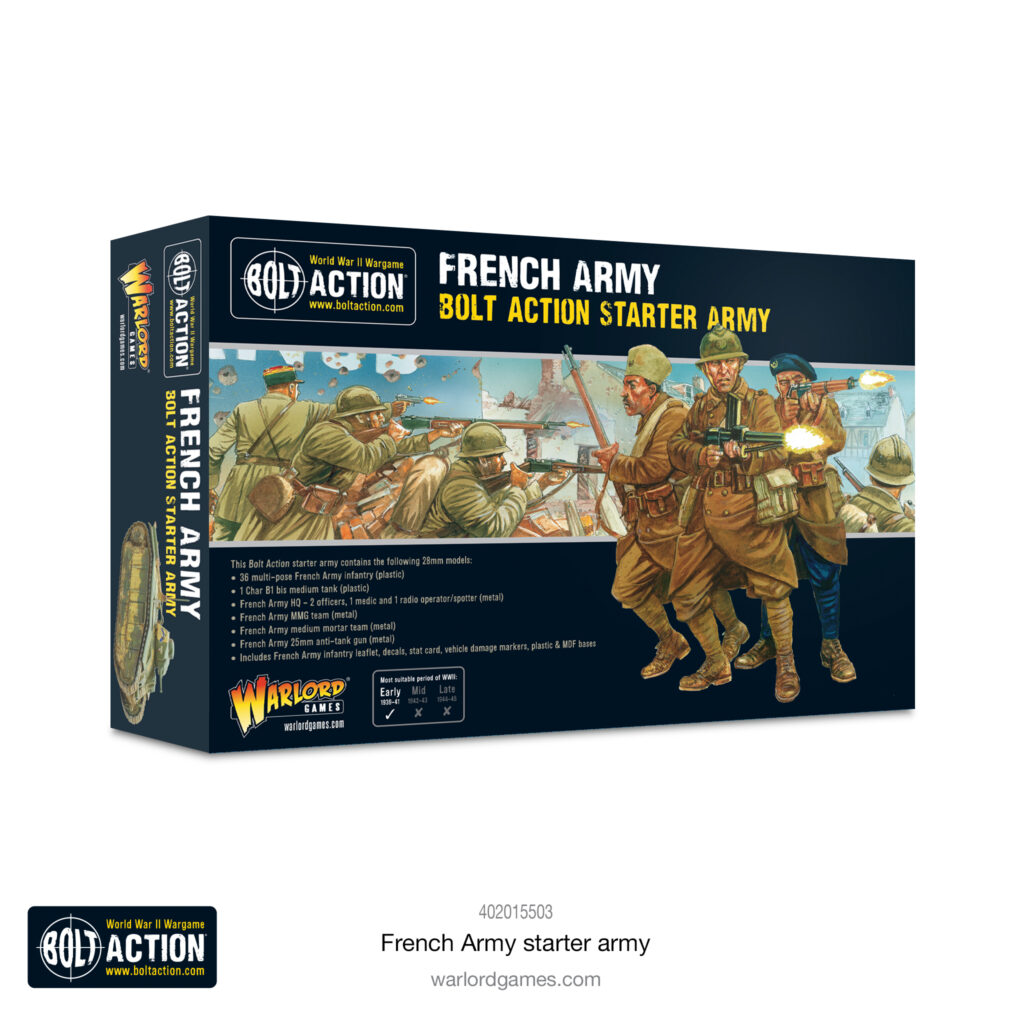
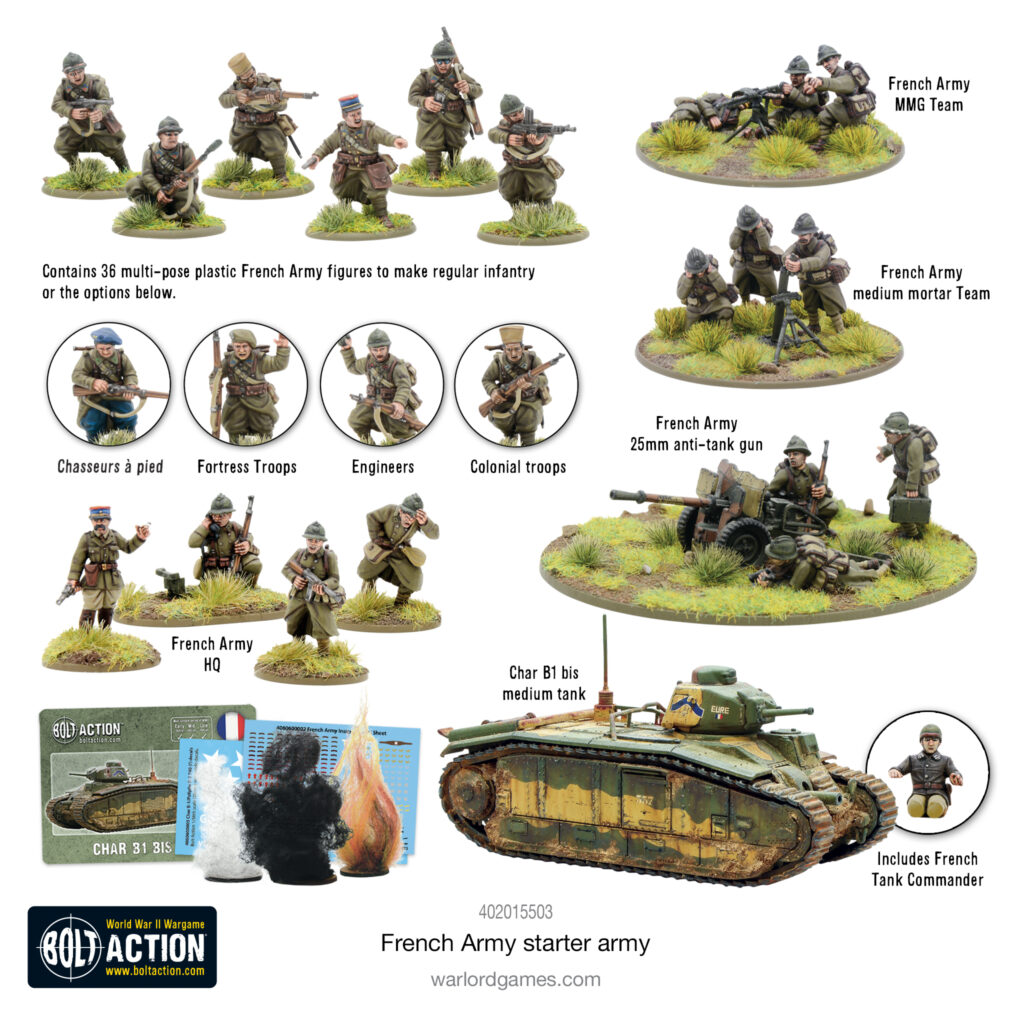
French Army Infantry Bundle
The standalone infantry boxed set will be available later in the year, but if you absolutely must get a hold of it early, consider the French Army Infantry bundle. This supplements three of the new boxes of infantry with armoured support in the form of a Somua S35 light tank and a transport option in the Lorraine 38L armoured carrier. Plus, you’ll get a free 75mm light artillery team for long-range support. This bundle is the only way to get access to the French Army Infantry boxed set ahead of its general release (anticipated in November).
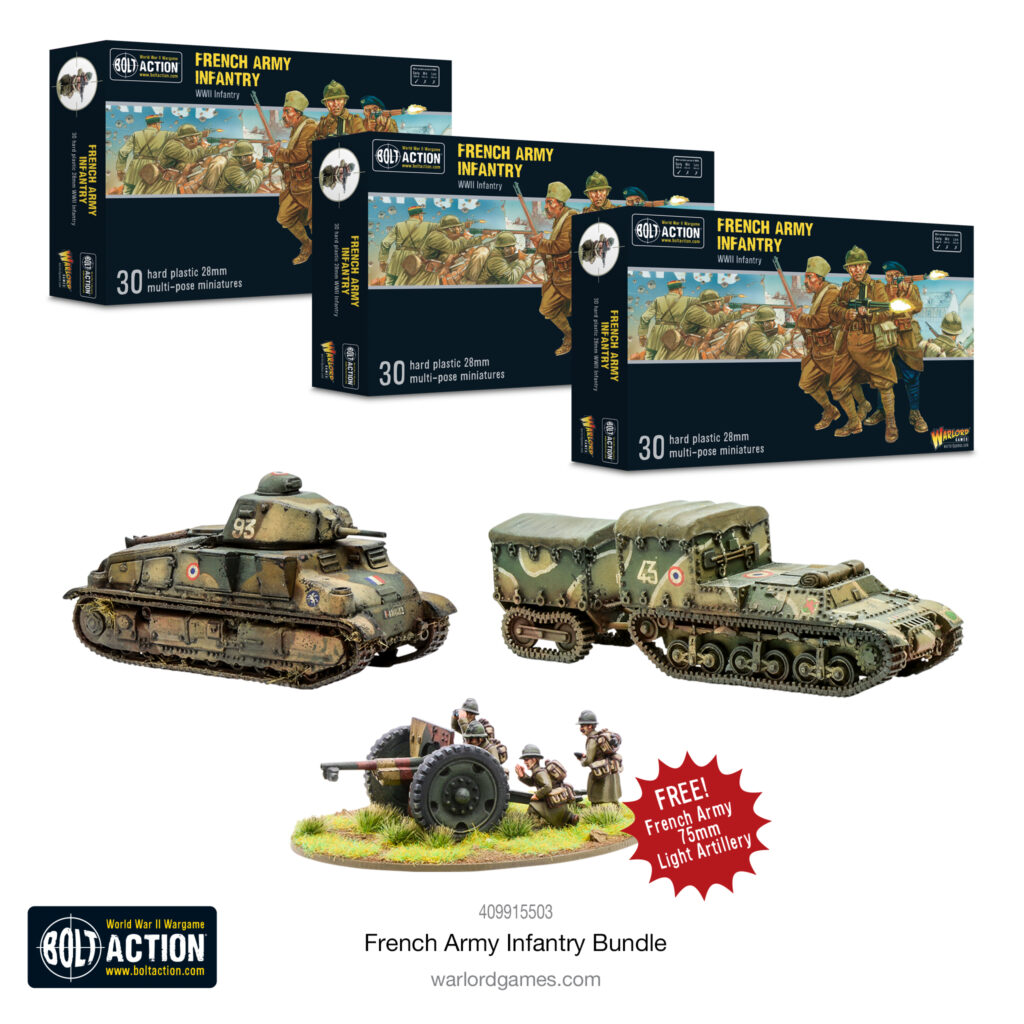
French Army All-in Bundle
This bundle is designed to kickstart a Bolt Action French Army collection, it contains a wide variety of unit types with which to ply your trade in tabletop warfare. At the core of the bundle is the new French Starter Army, as detailed above. But add in the other elements of this bundle and you’ll have a wealth of tactical options from which to choose from: cavalry, artillery transports and light tanks will all ably support your new infantry. It represents terrific value against buying its contents separately; you’ll get a weapons teams box, and two artillery pieces for free! And, armed with the Armies of France and the Allies Bolt Action supplement, you’ll have everything in hand to field your new army on the tabletop.
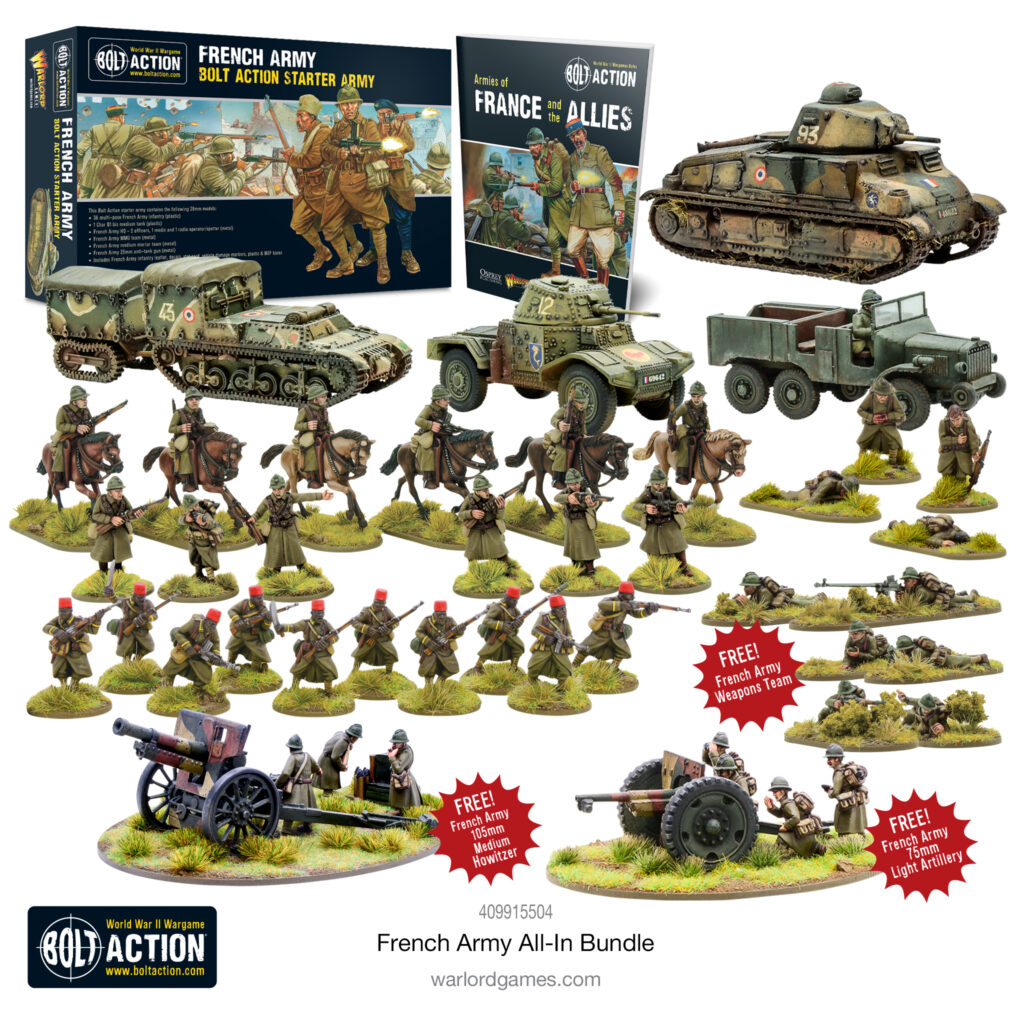
Essential Reading
Get special edition miniatures free with these books, only when ordering directly from the Warlord Games Webstore.
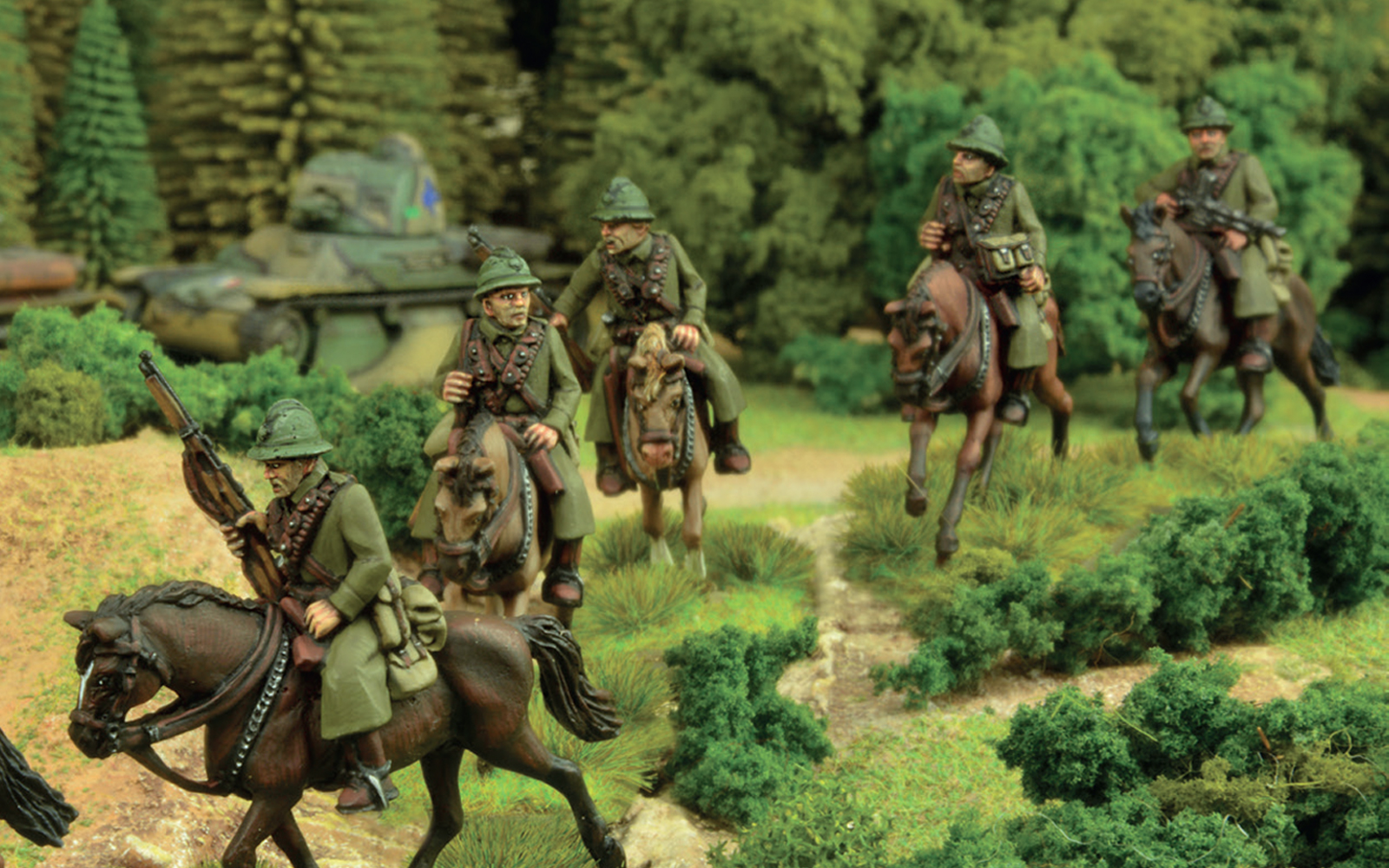
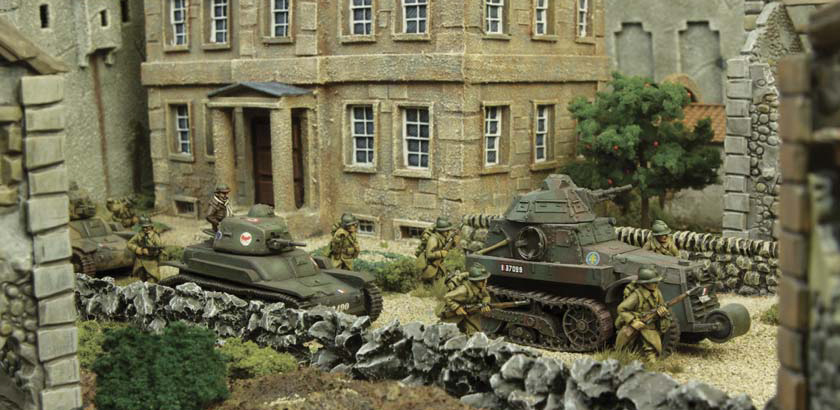

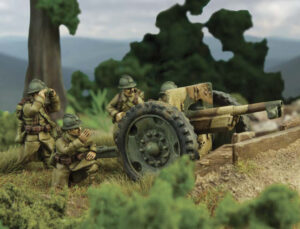
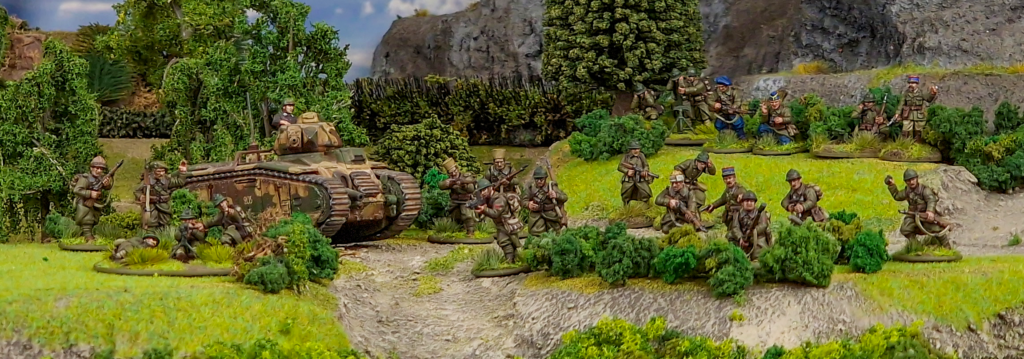
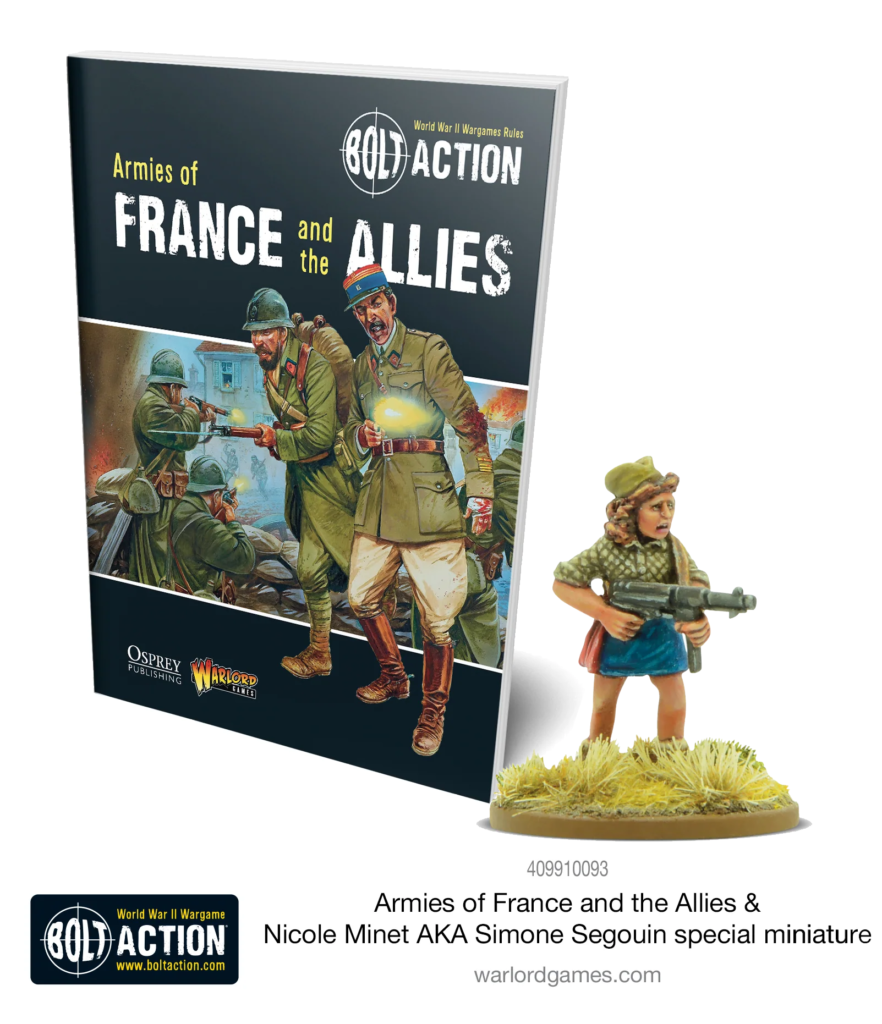
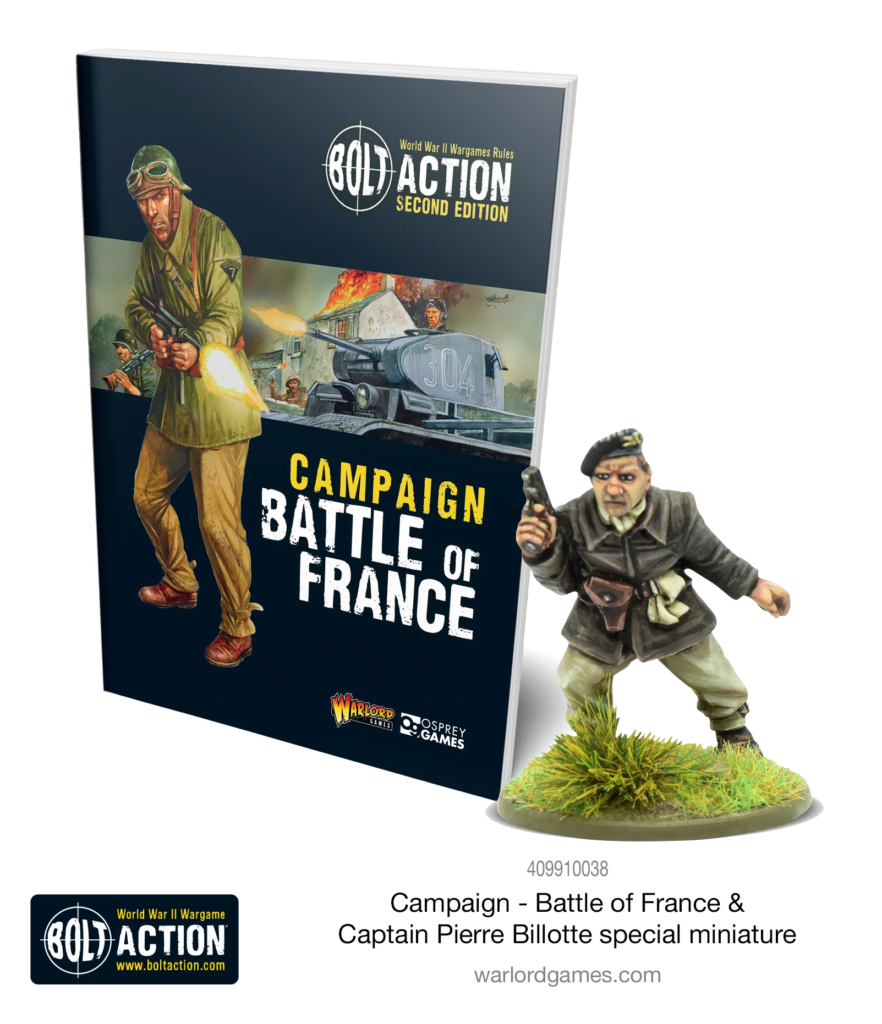
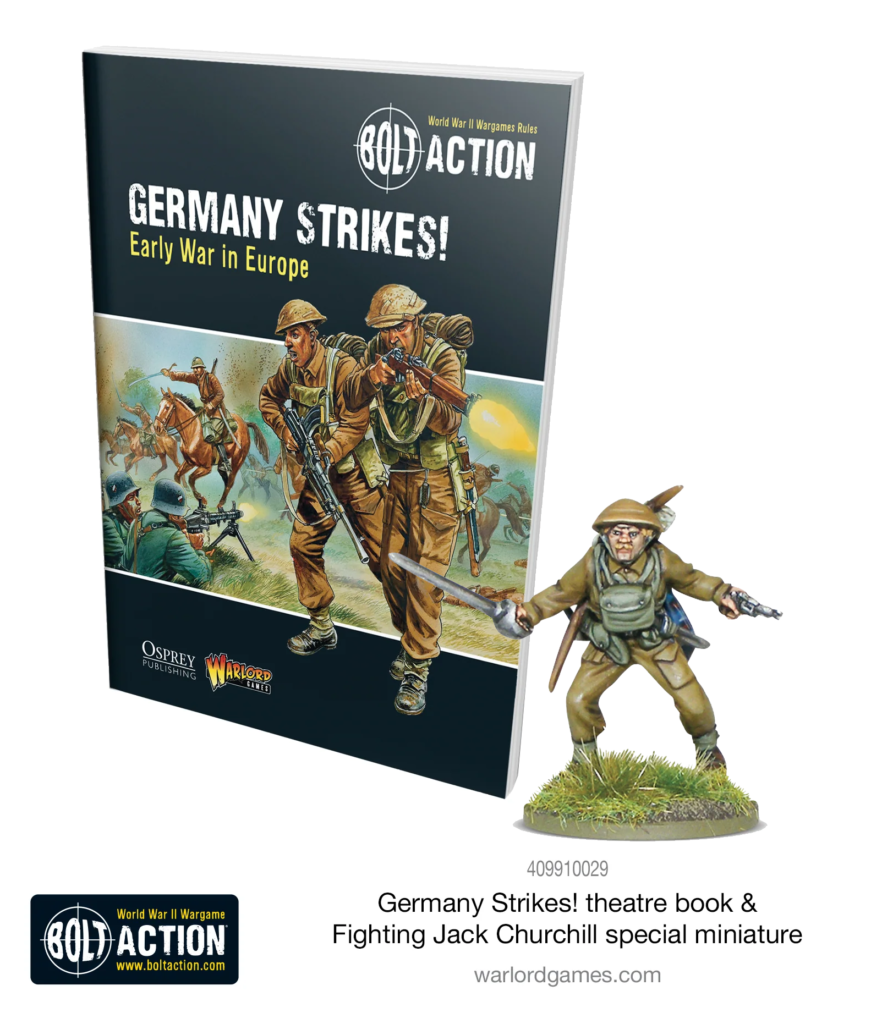
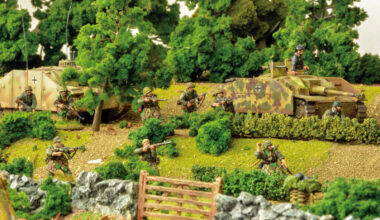
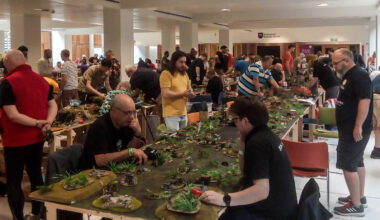
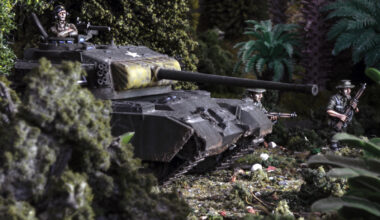
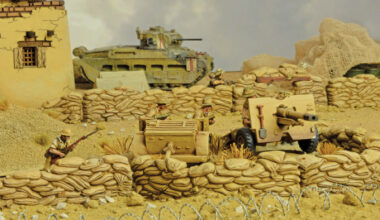
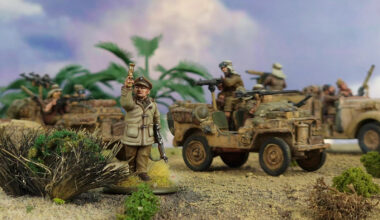
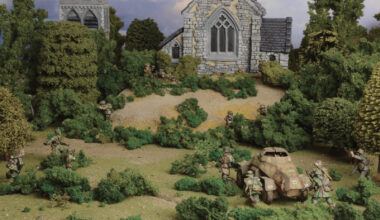
3 comments
Great article Marcus, which does the much-maligned early-war French justice.
Le 75 avec le bouclier coupé et les pneus de camion ont été utilisées a partir de 1942 a bir hakeim par les forces francaise libre qui lui ont apporté ces modifications. En 1940 le 75 n’était pas où peu utilisée c’était un vestige de 14 18. Il avait alors un grand bouclier très haut et des roues en bois cf ‹ Bir Hakeim › écrit par Erwan bergot
Sorry but the 75mm gun model 1897 formed the bulk of divisionnal artillery in 1939-1940 with 3 groups (of 3 batteries of 4 guns each) par artillery regiment. Between 4500 & 5000 75mm guns were pressed in service in 1940, the vast majority of them still being horse-drawn with wooden wheels, but approximately 800 of them had been modernized with tyres for motorized units (7 motorized infantry divisions, along with all 5 cavalry & 3 light mechanized divisions, but also 9 mobile artillery regiments that backed up the Maginot Line fixed defences and some general reserve light artillery regiments). Please see references “1940 l’armement terrestre” by Stephane FERRARD, several GBM magazines and also the ATF40 website
Comments are closed.